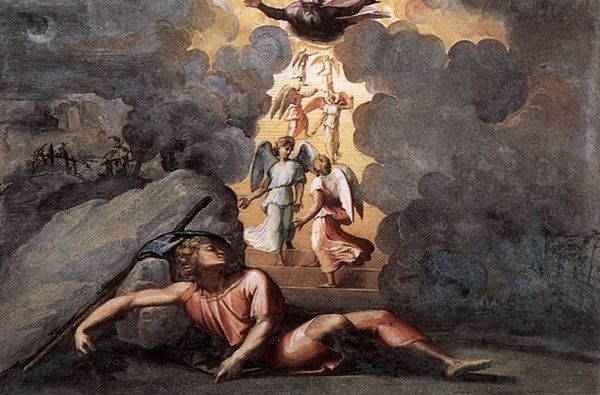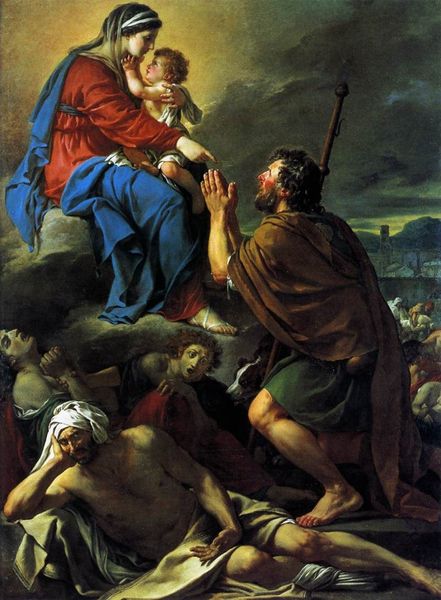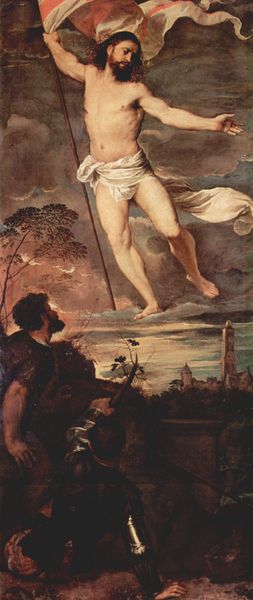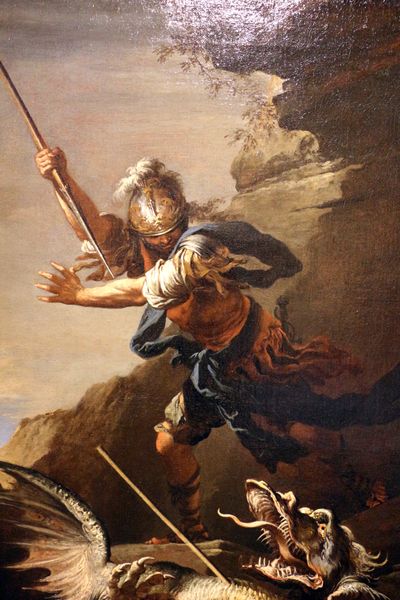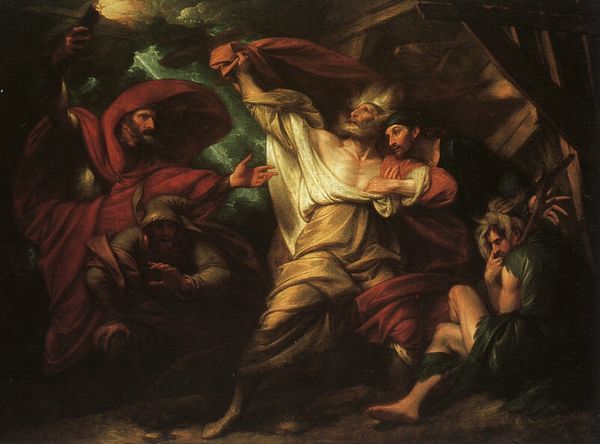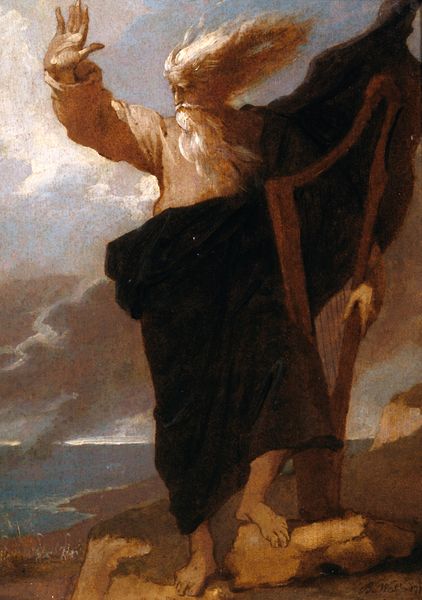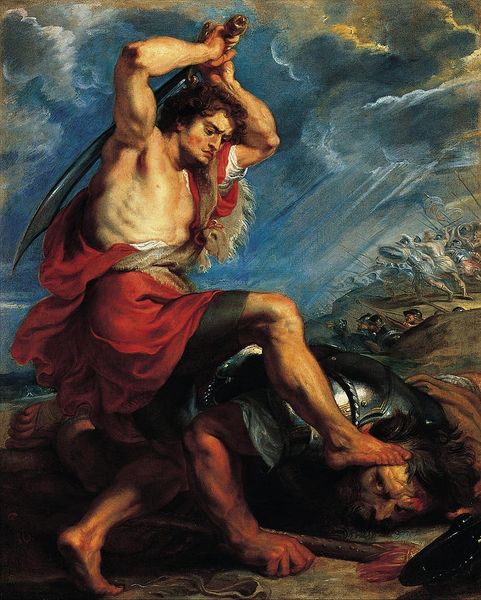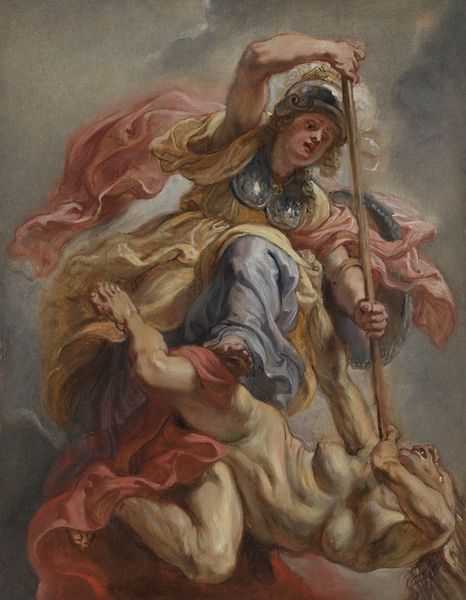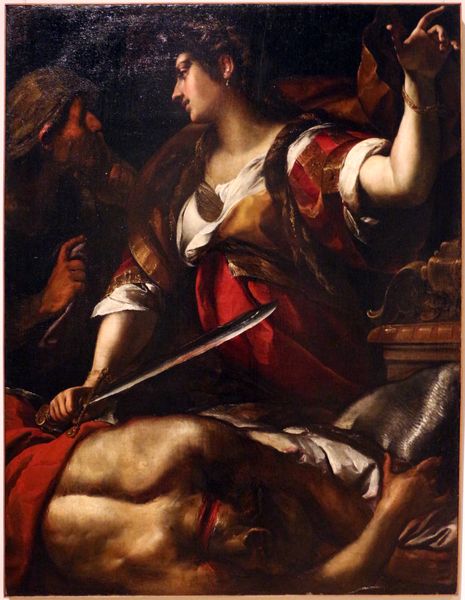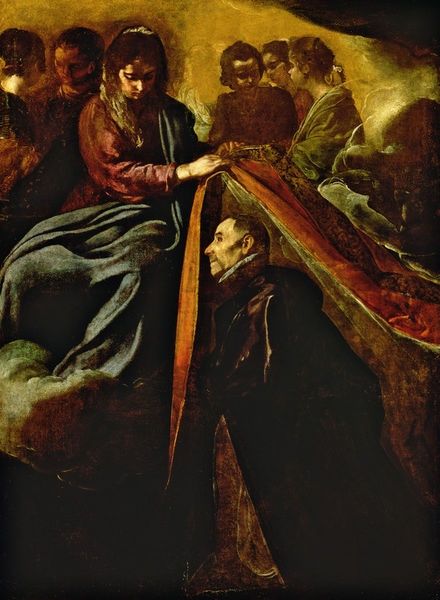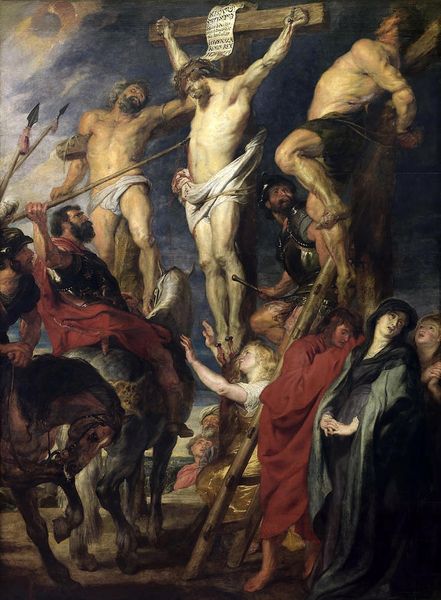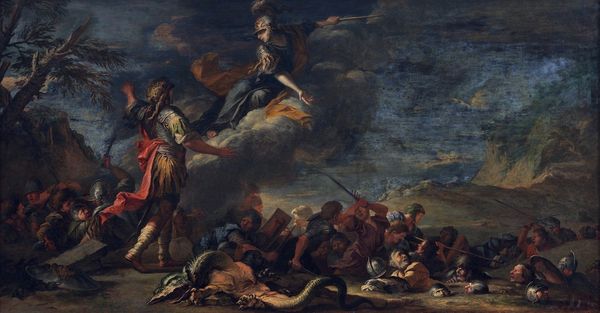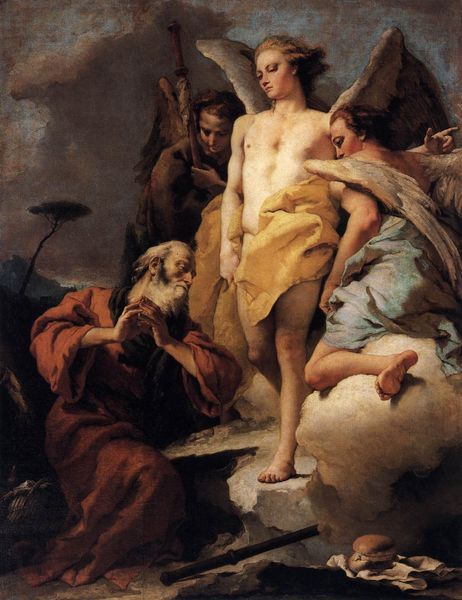
Sir Arthegal, the Knight of Justice, with Talus, the Iron Man (from Spenser’s ‘Faerie Queene’) Possibly 1778
0:00
0:00
Dimensions: support: 2426 x 1460 mm
Copyright: CC-BY-NC-ND 4.0 DEED, Photo: Tate
Editor: Mortimer’s large-scale painting, "Sir Arthegal, the Knight of Justice, with Talus, the Iron Man," shows a scene inspired by Spenser's *Faerie Queene*. The dramatic lighting really emphasizes the figures, but I'm struck by the raw, almost unfinished quality of the brushwork. What can you tell me about the materiality and production of this painting? Curator: Notice how Mortimer emphasizes the process by leaving visible brushstrokes. This wasn't simply about depicting a scene, but about the act of *making*. Consider the social context: Mortimer challenged the traditional hierarchy of artistic subjects. By embracing a raw, almost crude style, he elevated the labor of painting itself. Editor: So, you're saying the rough finish and visible brushstrokes aren't a flaw, but a deliberate choice highlighting the artistic process? Curator: Precisely. He’s drawing attention to the materials—paint, canvas—and the labor involved, subverting the polished refinement expected of high art at the time. It makes you think about art's role and value in society, doesn’t it? Editor: That’s a perspective I hadn’t considered, that challenges my preconceptions about finish and intention. Curator: Indeed, and by doing so, it sheds light on what we value in art and why.
Comments
tatebritain 7 months ago
⋮
http://www.tate.org.uk/art/artworks/mortimer-sir-arthegal-the-knight-of-justice-with-talus-the-iron-man-from-spensers-faerie-t02057
Join the conversation
Join millions of artists and users on Artera today and experience the ultimate creative platform.
tatebritain 7 months ago
⋮
This painting refers to the courtly fantasy of British origins prevalent in the Elizabethan age and the seventeenth century. It illustrates Edmund Spenser’s The Fairie Queene 1590/6, a poem that claims Elizabeth I as heir to King Arthur’s British kingdom. Arthegal was one of the Queene’s knights, trained by the immortal Astraea to be the champion of True Justice. She gave him the invincible sword, Chrysaor, which he holds here. Behind him is Talus, his squire. Talus was a man ‘made of iron mould, immoveable, resistlesse’. He carries an iron flail with which he threshes out falsehood. Gallery label, September 2004

